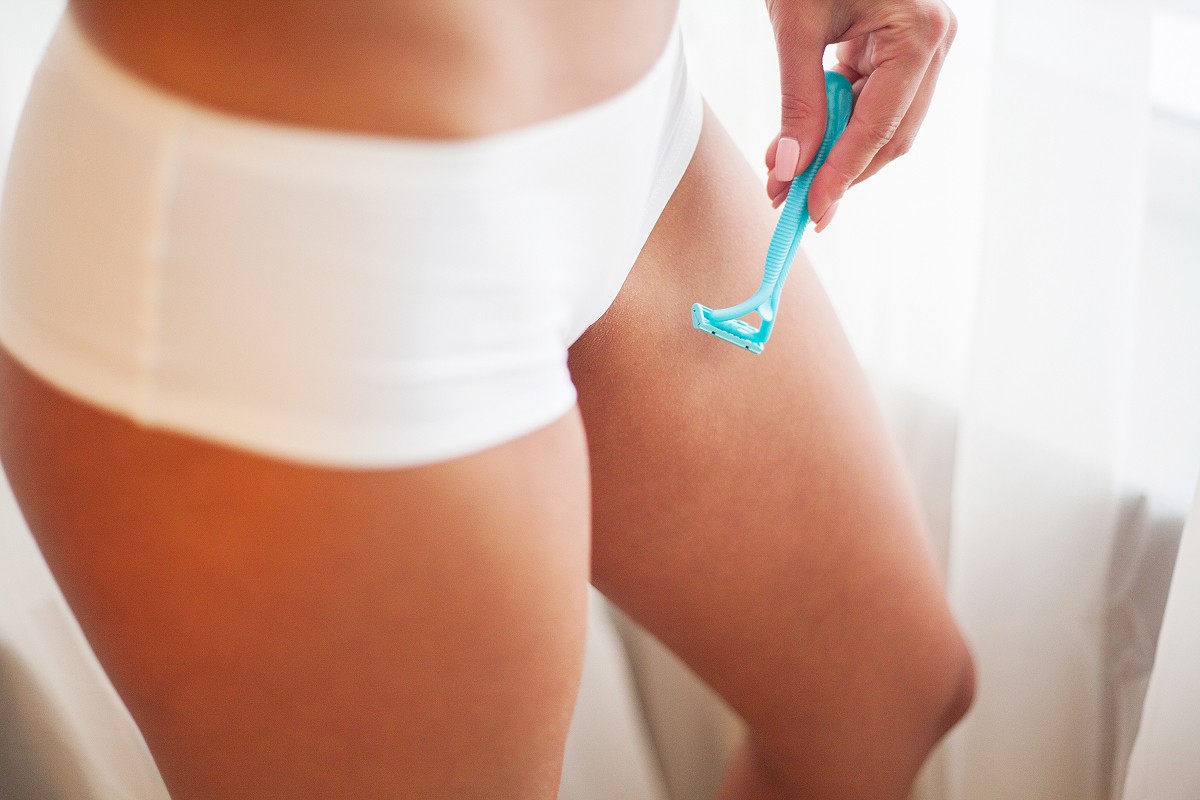How to Avoid and Soothe Dreaded Razor Burn
There’s nothing quite like the feel of a clean, smooth shave. Whether you’re shaving your legs, armpits, or pubic area, it just feels good to be neat, fresh and clean. But in the quest to achieve that perfect shave, you might accidentally cut yourself or walk away with razor burn. There’s good news though—you’re not alone with your struggles and there are plenty of methods to prevent and treat razor burn wherever it may occur.
What Causes Razor Burn
Razor burn is a skin irritation that can develop from shaving. Typically, it appears as a red patch of skin that may burn, itch, or be generally tender.
There are many ways to accidentally give yourself razor burn, including:
- Shaving on dry skin or barely wet skin
- Not using enough shaving cream, gel or lather
- Using an old or dull razor blade
- Pressing harder than necessary while shaving
- Shaving in the wrong direction
If you have sensitive skin, you may be more likely to develop razor burn so it’s even more important to be careful when you shave.
Where Is Razor Burn Most Likely to Develop?
While it’s true razor burn can form anywhere you shave, you’re most likely to develop razor burn on and around hard to reach areas of the body like armpits, bikini lines, and your pubic area. Since these areas aren’t flat and smooth—and hair can grow coarse and more wild in these places—you may find yourself pressing too hard or going against the grain of your body’s hair growth, irritating the skin.
Shaving Techniques to Prevent Razor Burn
Proper shaving techniques go a long way in preventing razor burns, but prevention starts before you even pick up the razor. Here are some tips for a smooth shave:
Get rid of dead skin cells first
Exfoliating your skin before shaving is a great way to set yourself up for success. You can use a loofah or bath scrub to gently loosen any dead skin and soften your skin. However, you don’t want your skin to be too soft, or else it will be easier to cut with the razor.
Use cool water instead of hot or warm
Cool water is better for shaving since it will moisturize your skin and help keep it from becoming too soft. Pairing that cooler water with shaving cream instead of soap helps you achieve the proper lubrication and lather to protect your skin.
Razor quality and shaving direction
Keep in mind that the quality of your razor and the direction of shaving are very important. Going with the grain (in the direction the hair grows) will leave you with an uneven shave and potential for more cuts or razor burn, while using a clean sharp razor and going against the grain will give you a cleaner, smoother shave.
The clearest example of shaving against the grain is shaving your legs; since the hair grows downward, you want to shave upward from the ankles toward the knees for the closest, cleanest shave.
Deciding the shaving direction for armpits can be tricky, so you may want to experiment with downward and upward strokes to clean up this area. Even more challenging are bikini lines and pubic hair. Pubic hair generally grows downward, but if you are concerned about sensitive skin or developing razor burn, you may want to start shaving with the grain (downward) at first to build confidence. Eventually, if you move on to shaving against the grain, you will get a closer shave.
Moisturize skin after shaving
An additional step to take care of your skin is to moisturize after shaving. This helps soothe skin and lock in moisture after you rinse and pat dry. Look for lotions, creams or oils without alcohol, fragrances or other ingredients that can further dry or irritate your skin.


Instant Itch Relief Cream and Itch Spray
Learn about Monistat Care® Instant Itch Relief Cream & Spray
How to Soothe Razor Burn
Despite your best efforts, razor burn can still happen. The easiest remedy is to take a break from shaving the afflicted area to give the skin time to heal. You also may find it more comfortable to wear loose clothing that won’t rub against or irritate your skin.
Shaving and razor burn can be a major pain, but they don’t have to be. The important thing is to be mindful of how you shave and how you set yourself up for success with the right tools and methods. Even then, rest assured that razor burn can happen to anyone, and it can be treated with the right products and time to heal.
